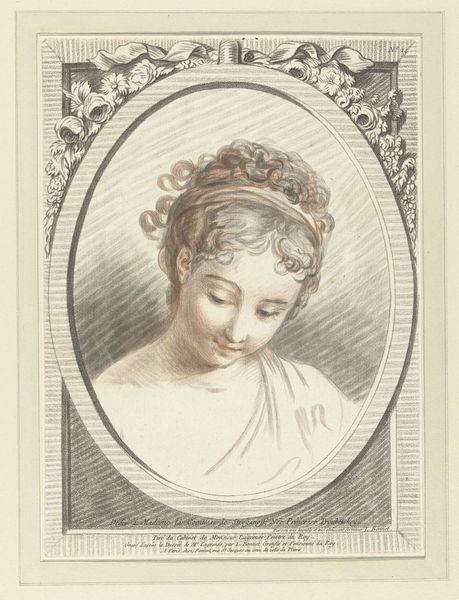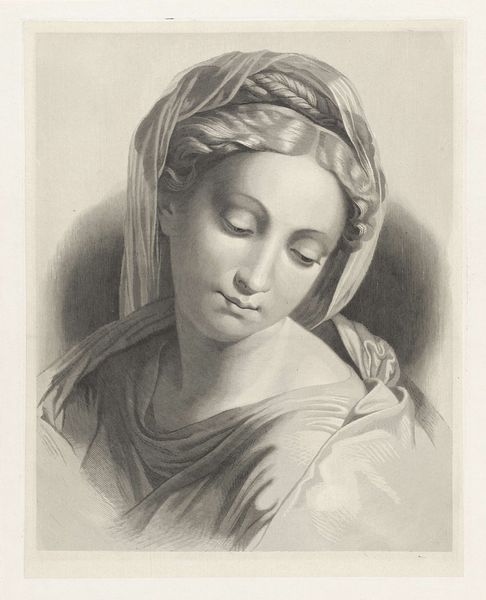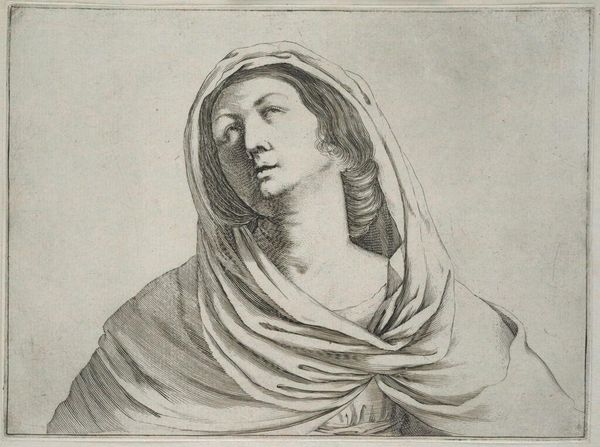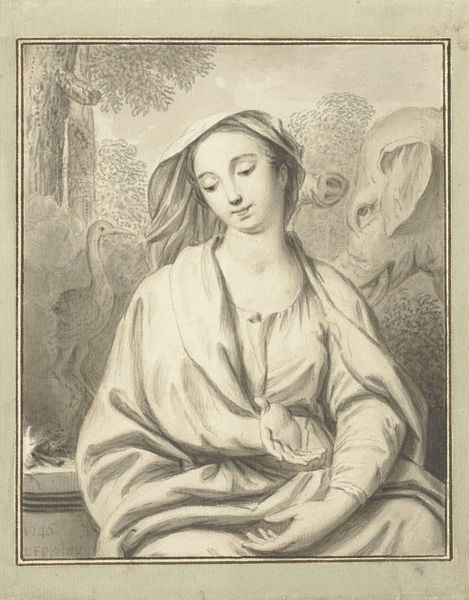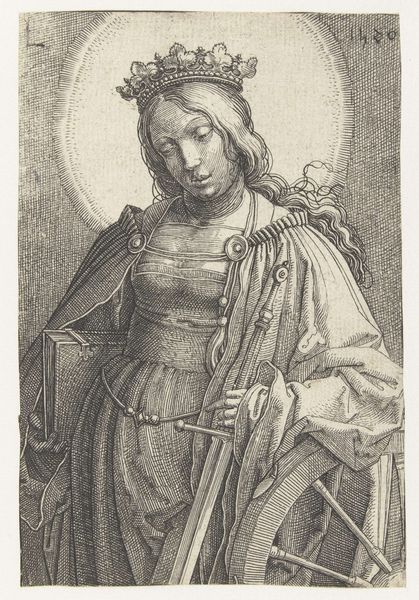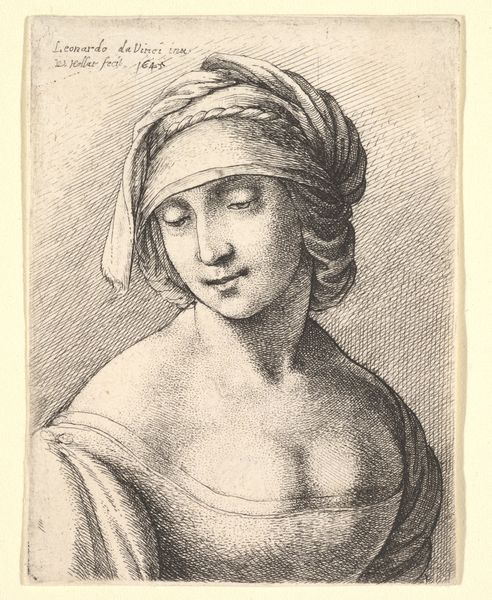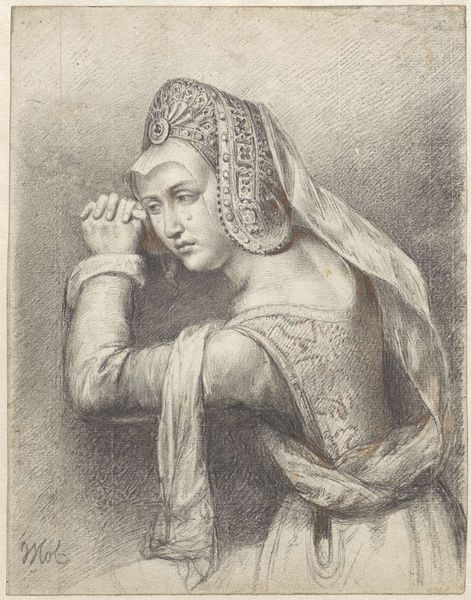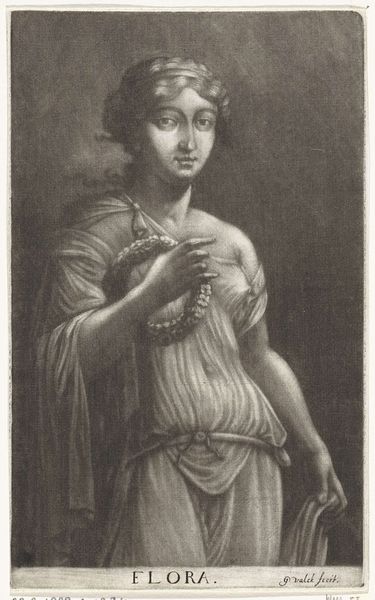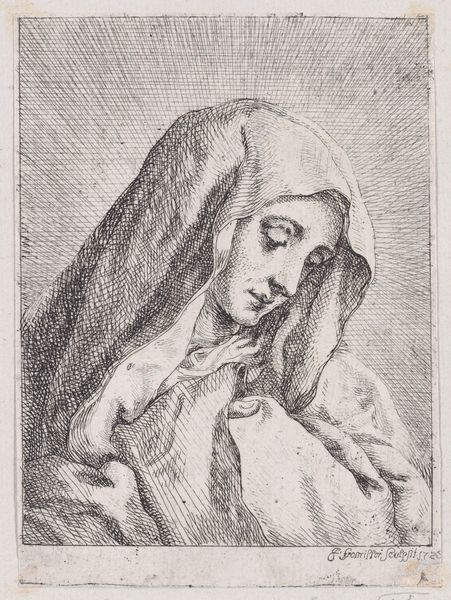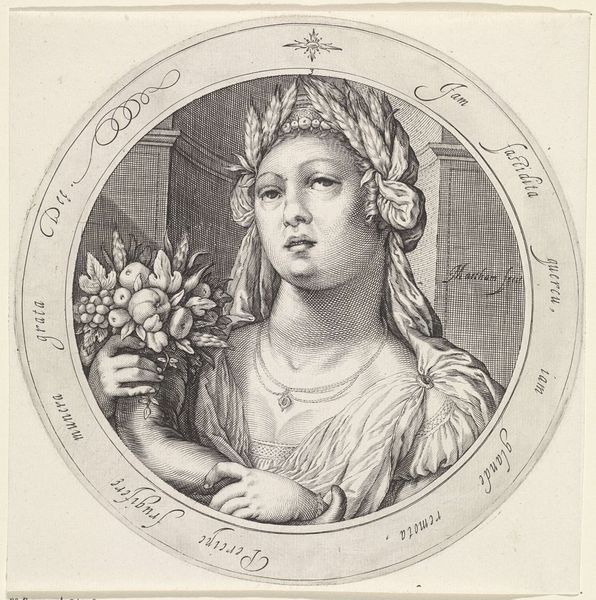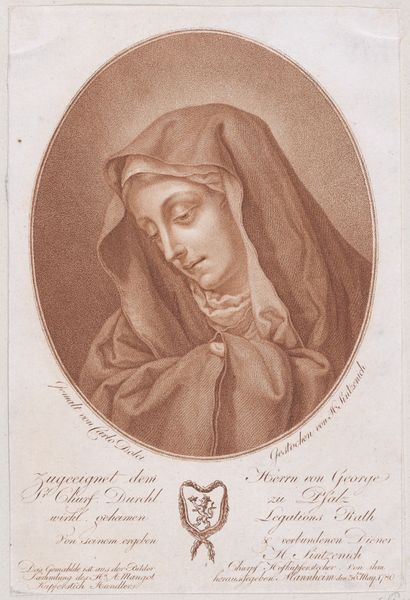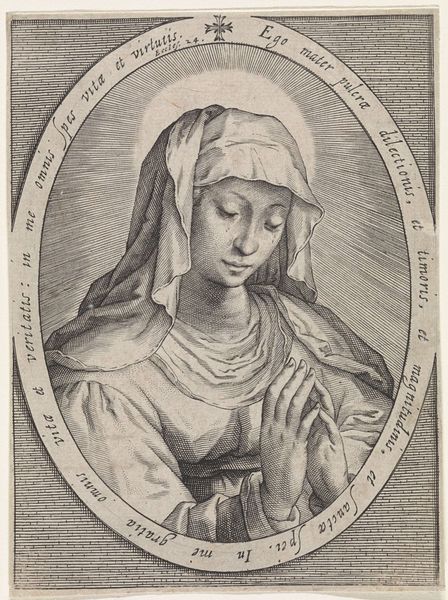
#
facial expression drawing
#
caricature
#
portrait reference
#
animal drawing portrait
#
portrait drawing
#
facial portrait
#
portrait art
#
fine art portrait
#
celebrity portrait
#
digital portrait
Dimensions: height 338 mm, width 265 mm
Copyright: Rijks Museum: Open Domain
Curator: This is Louis Marin Bonnet's "Priesteres," created between 1771 and 1772. It’s currently housed here at the Rijksmuseum. What's your initial impression? Editor: Serene, almost melancholic. The soft lines and sepia tones give it a dreamlike quality. The figure's downward gaze and the floral crown evoke a sense of innocence and vulnerability, but also a little tragic, like a figure bound by duty, no? Curator: It's fascinating to consider the societal pressures placed on women, particularly during that era. Bonnet operated within the artistic constraints of the late 18th century, a time defined by aristocratic patronage and the demands of portraiture. The very title "Priesteres", whether intended by the artist or added later, infuses it with an intriguing religious undertone. It invites us to explore the complex relationship between gender, power, and representation. Editor: Exactly! And notice how she is framed, almost hidden behind the veil. What does it conceal and what is meant to be revealed to the viewer? Her look, her positioning could mean many things for our reading. Maybe, in line with the burgeoning pre-Revolutionary discourse, we could question whether her serenity is chosen or enforced? Curator: Intriguing. Bonnet was renowned for his innovative printmaking techniques, mastering color stipple engraving to mimic the appearance of pastel drawings. The process itself demanded a certain level of control and precision, influencing the final aesthetic. This technique allows for a delicacy that aligns perfectly with the image of feminine virtue prevalent at the time. However, as you pointed out, this delicate portrayal and hidden image prompt more questions. Was Bonnet merely reflecting societal norms, or was there a more subversive element at play? Editor: I find that tension particularly compelling. It encourages us to challenge the superficial readings of beauty and delve into the underlying power dynamics at work. Looking at her now, and given everything we know, I see defiance and resignation mingling in her features. Curator: Indeed. "Priesteres," within the collection of the Rijksmuseum, presents us with more than a pretty face, or "celebrity portrait" as it has been tagged recently. It offers us a point to access and scrutinize a complex historical narrative of womanhood. Editor: And art like this is precious. By unpacking the image and looking behind the frame, so to speak, we give the portrait and the subject agency back.
Comments
No comments
Be the first to comment and join the conversation on the ultimate creative platform.
